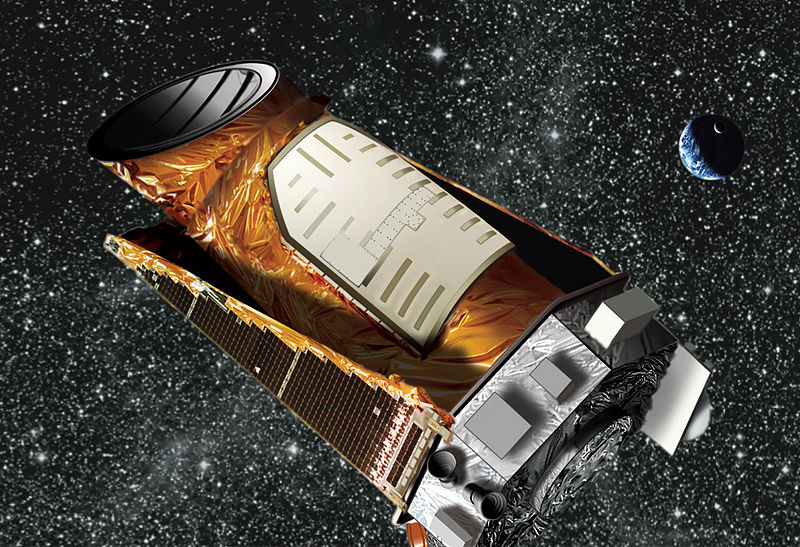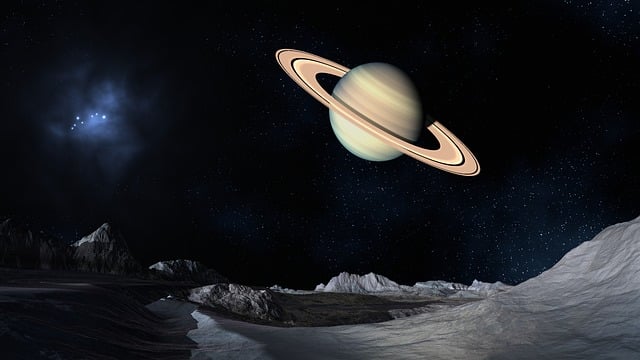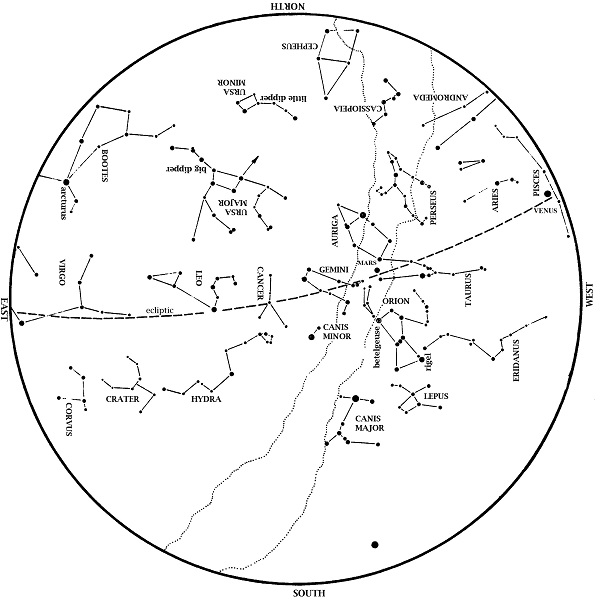
This star map shows the Houston sky at 9 pm CDT on November 1, 7 pm CST on November 15, and dusk on November 30. To use the map, put the direction you are facing at the bottom.
Constellations in the November southern sky are almost entirely devoid of bright stars. They represent beasts and gods related to water, indicating that they are part of the ‘Celestial Sea’. Examples are Aquarius, the Water Bearer and Pisces, the Fish. Even Capricornus, the Goat, has a fish tail because he’s originally Ea, Babylonian god of the waters. Below Aquarius is the one bright star in this area, Fomalhaut, marking the mouth of the Southern Fish. Ancient Mesopotamians imagined that the Persian Gulf extended upwards into the sky, joining this ‘sea’ of dim stars.
As the autumn ‘intermission’ in between the bright stars of summer and winter continues, Houstonians with a clear southern horizon can try to find a star that few Americans get to see. Due south and very low to the horizon at about 10:00 pm in mid-November is Achernar, 9th brightest star in the sky. It marks the end of the river Eridanus, another of the dim watery patterns that fill the southern autumn sky. If you can find it, Achernar will seem of average brightness because it is shining through so much air. Still, it is a good way to remind yourself that the stars we see depend on our latitude, and that the sky on the Gulf Coast is similar to, but not the same as, what most Americans see.
Saturn remains well placed for evening viewing, in the southwest at dusk, all month. Although significantly dimmer than Mars, Saturn outshines the stars near it, and is therefore just as easy to see.
Mars remains brilliant in the south at dusk. Although now considerably dimmer than in July (and gradually fading), Mars still outshines all stars in the November evening sky.
Venus emerges quickly out of the Sun’s glare and into the morning sky this month. Face southeast at dawn to find it.
Jupiter drops into the Sun’s glare and is out of sight this month. It is in conjunction with the Sun (aligned with the Sun, on the far side from Earth) on November 25.
Moon Phases in November 2018
New Nov. 7, 10:02 a.m. 1st Quarter Nov. 15, 8:54 a.m.
Full Nov. 22, 11:39 p.m. Last Quarter Nov. 29, 6:19 a.m.
Sunday, November 4, 2018, is the first Sunday of the month. Accordingly, Daylight Saving Time ends at 2:00 am on that date. (Officially, the time goes from 1:59 am back to 1:00, such that the 1:00 am hour happens twice). Don’t forget to set your clocks back one hour on Saturday night, the 3rd! Enjoy your extra hour of sleep!

Artist’s rendition of Kepler spacecraft. Artist:NASA/JPL-Caltech/Wendy Stenzel. Source: Wikimedia Commons.
After 9.6 years and 2,662 (and counting!) exoplanets discovered and confirmed, NASA’s Kepler telescope has finished its mission. Launched in 2009, Kepler is in Earth’s orbit around the Sun. trailing Earth by 94 million miles. From that vantage point, Kepler stared at stars in one region of the sky, looking for tiny but regular dimming of a star’s brightness that might result if a planet kept passing in front of it. On October 30, however, NASA announced that Kepler has run out of fuel and declared the mission over. More discoveries are possible, though, as scientists are still analyzing the most recent Kepler data.
George Observatory is open to the public! Come join us any clear Saturday night. All You Need To Know About
Clear Skies!









